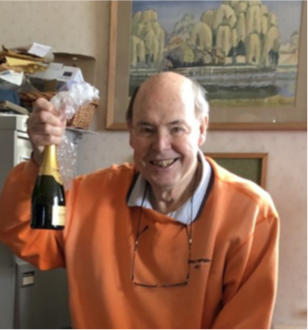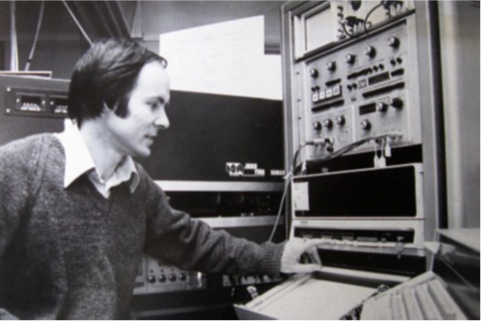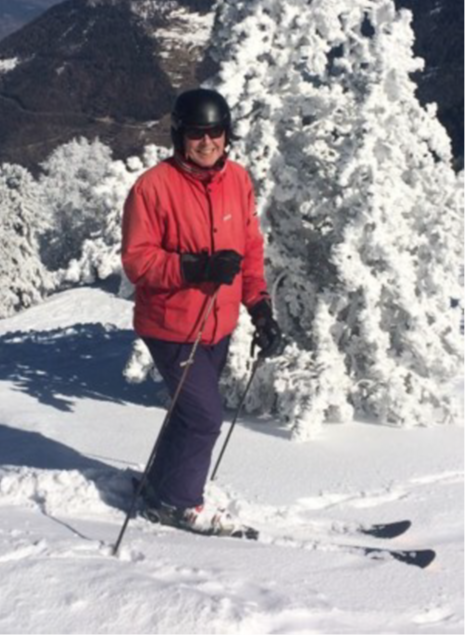Professor Ron Hester (1936 – 2022)
Professor Ron Hester, one of the original group of lecturers who set up the Department of Chemistry in York, died last month aged 86.

Ron Hester started work in the Department at time zero in 1965, was promoted to a Chair in 1983, and continued here until retirement and beyond. He shaped many of the Department’s undergraduate courses, initiated links with industry, and influenced both University and national scientific policy.
Scientifically, Professor Hester was a pioneer of time-resolved vibrational spectroscopy who believed in the importance of top-class instruments. He brought scientific ambition and experience of working in one of the world’s best chemistry departments. He played a major role in developing the Lasers for Science Facility at the Rutherford Appleton Laboratory (RAL). He also made an impact that continued in his retirement by editing books on environmental issues.
Pioneering Raman Spectroscopy
Ron obtained his BSc from the University of London and his PhD from Cornell, where he was first introduced to the power of Raman spectroscopy, which he used to study speciation in aqueous solution and molten salts. He moved to Cambridge as a post-doctoral fellow before returning to Cornell as an assistant professor. Dick Norman (our first Head of Department) spotted Ron’s talent, and recruited him for York on a tour of the USA in 1965.
In the 1970s, Ron started using the strong enhancements of the resonance Raman effect on cobalt corrinoids, organic radical ions and metal peroxo complexes. He demonstrated in 1981 that the excited state of [Ru(bpy)3]2+ in solution can best be described as a charge-transfer state with the charge localised on a single bipyridine – the nature of this excited state became a paradigm for many thousands of subsequent applications.
In the mid-1980s, together with David Phillips, Ron supported the development of the Ultra-violet Radiation Facility based within the Central Laser Facility at RAL where he used pulsed lasers to obtain resonance Raman spectra of excited states and intermediates with even shorter lifetimes. The first results on time-resolved resonance Raman spectroscopy of the triplet state of diphenylbutadiene appeared in 1984, followed by quinones, iron porphyrins and biological molecules. By the early 1990s, picosecond lasers allowed the investigation of even shorter lived species.

Professor Igor Lednev (State University of New York, Albany) reflected: “Ron played the most significant role in my career development. I was absolutely fascinated by experimental Raman spectroscopy, when I experienced it for the first time in his lab in 1990. It was a turning point in my professional career because I have been focused on the development and application of this method since then. I was lucky to learn Raman spectroscopy from the best in the field.”
Collaborator, Educator and Mentor
Ron was one of the first in the Department to set up collaborations with local industry – he helped develop kit for quantitative analysis of protein and carbohydrates in milk by infrared spectroscopy, showing the way forward for other external cooperation.
In Cornell, Ron authored a textbook of inorganic chemistry with his colleagues Sienko
and Plane. He brought his clarity of expression to his teaching here in York both in lectures and tutorials. He taught many important courses on physical and inorganic chemistry, including group theory, transition metal chemistry and spectroscopy. Generations of Vanbrugh students will remember the summer garden parties held at Ron’s house in Crayke, where they played volleyball and perhaps joined in a sing-song accompanied by Ron on guitar.
Ron was hugely supportive towards those he mentored. Professor Siva Umapathy (Indian Institute of Science Education and Research, Bhopal), who worked in the Hester group reminisced: “When I arrived at York, I had no laser experience and did not know much about how to set up a laser experiment or calibrate a spectrometer. After a visit to Rutherford Appleton Laboratory, I told Ron that I would not be suitable for the position since I am not experienced in electronics and computer operations. He told me, "I know your abilities and let us wait for six months and if you still have not picked up the knowledge and skill, we can discuss other options". Now when I look back, without such encouragement I would not be where I am.
Scholarship and Service
Another aspect of Ron’s work was the commissioning and meticulous editing of book series. The first series, edited with the late Robin Clark, started as Advances in Infrared and Raman
Spectroscopy but broadened its scope as Advances in Spectroscopy. Later he edited the RSC series on Issues in Environmental Science and Technology with Roy Harrison, covering a remarkable range from the first volume on “Mining and its environmental impact” in 1994 to the last on “Indoor air pollution” in 2019 - there are about 50 volumes. These books brought rigour to the subjects and represent a huge contribution to understanding of the environmental crisis.
Ron’s knowledge, energy, and organisational skills were widely recognised. He organised international conferences, served as chair of the SERC Chemistry Committee and was a member of its Science Board and Council. For RSC, he was a member of Publication Board. Within the University, he contributed to high level policy. During his tenure on national research committees, he helped focus the Department’s research profile at a time of large funding cuts under the Thatcher government.
A Zest for Life
Ron lived life to the full. He had a great love of skiing and spent much time in Verbier with friends, colleagues and family. Furthermore, alongside Tom Halstead, he was instrumental in establishing the university ski club not only for cross-country skiing on the local hills, but also joining university ski trips to Europe.

Even in retirement, Ron remained a regular visitor to the York Chemistry coffee room and many looked forwards to their regular, always entertaining, conversations with him.
Ron passed away at home on 25th March 2022, aged 86. He is survived by his wife Bridget, children Stephen, Alison, David, Catherine, and 10 grandchildren. Donations in his memory can be made to Prostate Cancer UK. Ron loved science, skiing, golf, wine, music, bad jokes, and most of all, his family and friends.
A fuller obituary, including additional quotes and reminiscences, can be found in Issue 343 (PDF ![]() , 694kb) of Chemistry Update.
, 694kb) of Chemistry Update.